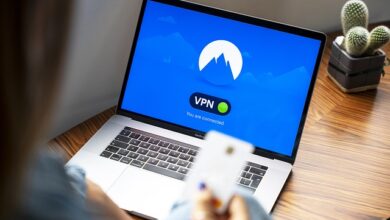How to Set Up a VPN on Your Router for Total Privacy

In today’s digital age, where online privacy and security are more critical than ever, setting up a Virtual Private Network (VPN) on your router can be one of the most effective ways to protect your data and maintain anonymity. Unlike installing a VPN on individual devices, configuring it directly on your router ensures that all connected devices—computers, smartphones, smart TVs, gaming consoles, and IoT devices—are automatically protected without requiring additional setup.
This guide will walk you through the process step by step, offering detailed explanations and tips to help you achieve total privacy with minimal effort. Let’s dive in!
Why Set Up a VPN on Your Router?
Before we delve into the technical aspects, let us first understand why setting up a VPN on your router is beneficial:
- Comprehensive Protection : By routing all traffic through the router-level VPN, every device connected to your network benefits from encryption and anonymity.
- Ease of Use : Once configured, there’s no need to install or manage separate apps on each device.
- Centralized Control : Manage your internet connection settings from one location instead of handling multiple configurations across various gadgets.
- Improved Performance : Some routers offer hardware-based acceleration for encrypted connections, which may enhance overall performance compared to software-based solutions.
- Enhanced Security : Protect yourself against cyber threats such as hackers, malware, and unauthorized surveillance when using public Wi-Fi networks.
Step-by-Step Guide: Setting Up a VPN on Your Router
Step 1: Choose the Right Equipment
To begin, ensure that your router supports third-party firmware or has built-in VPN capabilities. If not, consider upgrading to a router specifically designed for advanced networking features like DD-WRT, Tomato, or OpenWrt.
Key Considerations:
- Look for routers labeled “VPN-ready” or those compatible with popular open-source firmwares.
- Ensure sufficient RAM and storage space to handle the demands of running a VPN service.
- Check compatibility with your preferred VPN provider.
If your current router lacks these features, investing in a new model might be worthwhile for long-term peace of mind.
Step 2: Select a Reliable VPN Provider
Choosing the right VPN provider is crucial because they’ll determine how secure and private your connection truly is. Here are some factors to consider:
- No-Logs Policy : Opt for providers who explicitly state they do not log user activity.
- Strong Encryption Standards : AES-256 encryption is considered the gold standard for securing sensitive information.
- Wide Server Network : A larger server count increases options for bypassing geo-restrictions and reducing latency.
- Router Compatibility : Confirm that the chosen provider offers specific instructions or support for router integration.
Some highly recommended services include ExpressVPN, NordVPN, Surfshark, and Mullvad.
Step 3: Configure Your Router
The exact steps vary depending on your router model and firmware type. Below is a general outline covering common scenarios:
Option A: Using Built-In Router Features
Many modern routers come equipped with native VPN functionality. To activate this feature:
- Access your router’s admin panel by entering its IP address (e.g.,
192.168.0.1) into your browser. - Log in with your credentials (default username/password combinations are often found in the manual).
- Navigate to the “Services” or “Security” section and locate the option for enabling a PPTP/L2TP/IPSec client.
- Enter the required details provided by your VPN provider (server address, port number, authentication method, etc.).
- Save changes and restart the router if prompted.
Option B: Installing Third-Party Firmware
For older or less sophisticated routers, flashing custom firmware opens up enhanced capabilities:
- Download the appropriate version of DD-WRT, Tomato, or OpenWrt based on your router model.
- Back up existing settings before proceeding to avoid losing configuration data.
- Follow the manufacturer’s guidelines to flash the firmware onto your router.
- After successful installation, access the updated interface via the web portal.
- Locate the OpenVPN client under advanced settings and input the necessary configuration files supplied by your VPN provider.
Note: Flashing firmware voids warranties and carries risks; proceed cautiously and consult official documentation thoroughly.
Step 4: Test Your Connection
Once everything is set up, verify that the VPN is functioning correctly:
- Visit websites like WhatIsMyIP.com or ipleak.net to confirm whether your real IP address is masked.
- Perform DNS leak tests to ensure all queries pass through the encrypted tunnel.
- Monitor connection speeds to assess any potential slowdowns caused by encryption overhead.
Adjust settings accordingly if issues arise, such as selecting different servers or tweaking protocol preferences.
Tips for Maximizing Privacy & Security
Here are additional strategies to fortify your setup:
- Use Strong Passwords : Secure both your router and Wi-Fi network with complex passwords to prevent unauthorized access.
- Enable WPA3 Encryption : This latest wireless security protocol provides robust protection against brute-force attacks.
- Regularly Update Firmware : Keep your router’s software current to benefit from bug fixes and improved performance.
- Disable Remote Management : Prevent external parties from accessing your router remotely unless absolutely necessary.
- Monitor Bandwidth Usage : Be mindful of data caps imposed by certain ISPs or VPN providers.




